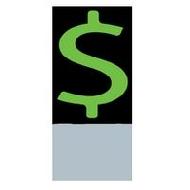
 |
|
| Financial Terms | |
| economic components model |
|
Information about financial, finance, business, accounting, payroll, inventory, investment, money, inventory control, stock trading, financial advisor, tax advisor, credit.
Main Page: finance, inventory, tax advisor, payroll, money, financial, financial advisor, stock trading, |
Definition of economic components model
economic components modelAbrams’ model for calculating DLOM based on the interaction of discounts from four economic components.
Related Terms:Gordon modelpresent value of a perpetuity with growth. log size modelAbrams’ model to calculate discount rates as a function of the logarithm of the value of the firm. QMDM (quantitative marketability discount model)model for calculating DLOM for minority interests r the discount rate Arbitrage-free option-pricing modelsYield curve option-pricing models. Asset pricing modelA model for determining the required rate of return on an asset. Asset pricing modelA model, such as the Capital Asset Pricing model (CAPM), that determines the required Binomial option pricing modelAn option pricing model in which the underlying asset can take on only two  Black-Scholes option-pricing modelA model for pricing call options based on arbitrage arguments that uses Capital asset pricing model (CAPM)An economic theory that describes the relationship between risk and Constant-growth modelAlso called the Gordon-Shapiro model, an application of the dividend discount Deterministic modelsLiability-matching models that assume that the liability payments and the asset cash Discounted dividend model (DDM)A formula to estimate the intrinsic value of a firm by figuring the Dividend discount model (DDM)A model for valuing the common stock of a company, based on the Dividend growth modelA model wherein dividends are assumed to be at a constant rate in perpetuity. Economic assumptionseconomic environment in which the firm expects to reside over the life of the Economic defeasanceSee: in-substance defeasance.  Economic dependenceExists when the costs and/or revenues of one project depend on those of another. Economic earningsThe real flow of cash that a firm could pay out forever in the absence of any change in Economic exposureThe extent to which the value of the firm will change because of an exchange rate change. Economic incomeCash flow plus change in present value. Economic order quantity (EOQ)The order quantity that minimizes total inventory costs. Economic rentsProfits in excess of the competitive level. Economic riskIn project financing, the risk that the project's output will not be salable at a price that will Economic surplusFor any entity, the difference between the market value of all its assets and the market Economic unionAn agreement between two or more countries that allows the free movement of capital, Extrapolative statistical modelsmodels that apply a formula to historical data and project results for a Factor modelA way of decomposing the factors that influence a security's rate of return into common and Garmen-Kohlhagen option pricing modelA widely used model for pricing foreign currency options. Index modelA model of stock returns using a market index such as the S&P 500 to represent common or Leading economic indicatorseconomic series that tend to rise or fall in advance of the rest of the economy. Market modelThis relationship is sometimes called the single-index model. The market model says that the ModelingThe process of creating a depiction of reality, such as a graph, picture, or mathematical Pie model of capital structureA model of the debt/equity ratio of the firms, graphically depicted in slices of Single factor modelA model of security returns that acknowledges only one common factor. Single index modelA model of stock returns that decomposes influences on returns into a systematic factor, Simple linear trend modelAn extrapolative statistical model that asserts that earnings have a base level and Single-index modelRelated: market model Stochastic modelsLiability-matching models that assume that the liability payments and the asset cash flows Two-factor modelBlack's zero-beta version of the capital asset pricing model. Two-state option pricing modelAn option pricing model in which the underlying asset can take on only two Value-at-Risk model (VAR)Procedure for estimating the probability of portfolio losses exceeding some Yield curve option-pricing modelsmodels that can incorporate different volatility assumptions along the Economic Value Added (EVA)Operating profit, adjusted to remove distortions caused by certain accounting rules, less a charge Capital Asset Pricing Model (CAPM)A model for estimating equilibrium rates of return and values of economic integrationthe creation of multi-country markets economic order quantity (EOQ)an estimate of the number economic production run (EPR)an estimate of the number economically reworkedwhen the incremental revenue from the sale of reworked defective units is greater than economic value added (EVA)a measure of the extent to which income exceeds the dollar cost of capital; calculated Internet business modela model that involves Binomial modelA method of pricing options or other equity derivatives in Black-Scholes modelThe first complete mathematical model for pricing Markowitz modelA model for selecting an optimum investment portfolio, Economic lifeThe period over which a company expects to be able to use an asset. capital asset pricing model (CAPM)Theory of the relationship between risk and return which states that the expected risk constant-growth dividend discount modelVersion of the dividend discount model in which dividends grow at a constant rate. dividend discount modelComputation of today’s stock price which states that share value equals the present value of all expected future dividends. economic order quantityOrder size that minimizes total inventory costs. economic value added (EVA)Term used by the consulting firm Stern Stewart for profit remaining after deduction of the cost percentage of sales modelsPlanning model in which sales forecasts are the driving variables and most other variables are Classical MacroeconomicsThe school of macroeconomic thought prior to the rise of Keynesianism. EconomicsThe study of the allocation and distribution of scare resources among competing wants. MacroeconomicsThe study of the determination of economic aggregates such as total output and the price level. MicroeconomicsThe study of firm and individual decisions insofar as they affect the allocation and distribution of goods and services. Supply-Side EconomicsView that incentives to work, save, and invest play an important role in determining economic activity by affecting the supply side of the economy. Related to : financial, finance, business, accounting, payroll, inventory, investment, money, inventory control, stock trading, financial advisor, tax advisor, credit. |